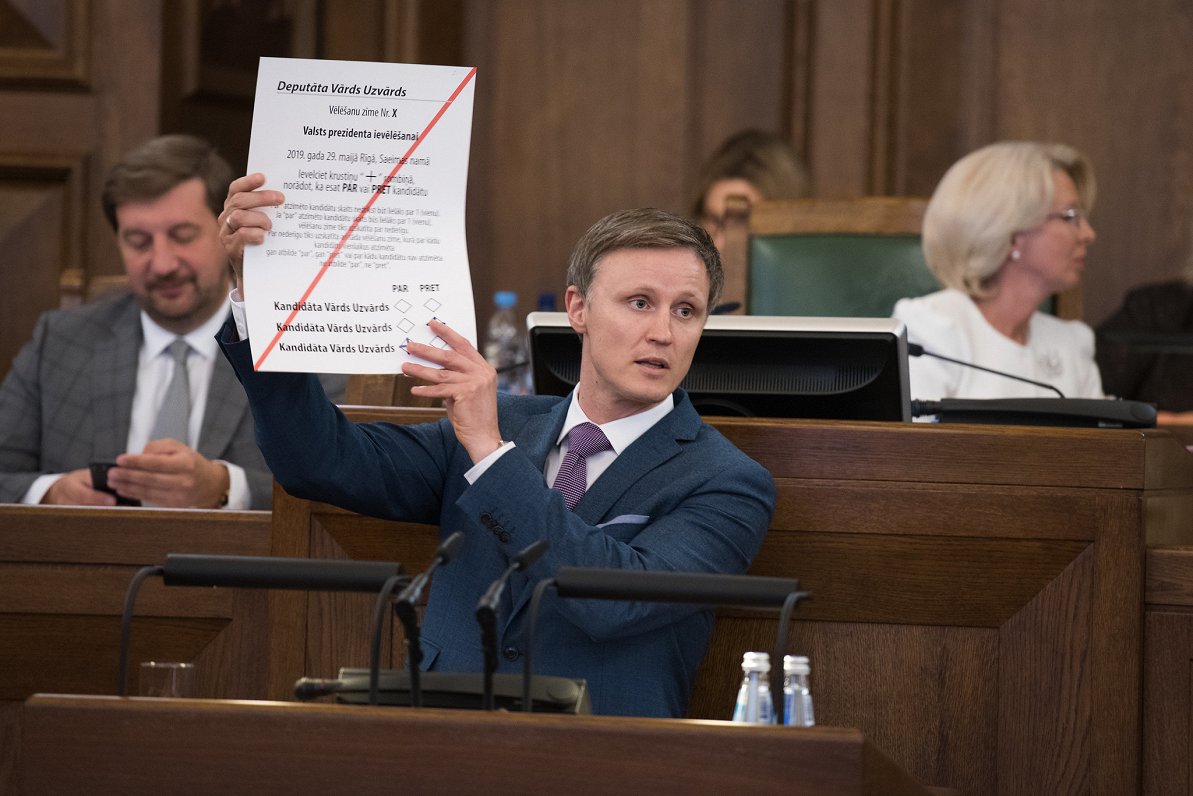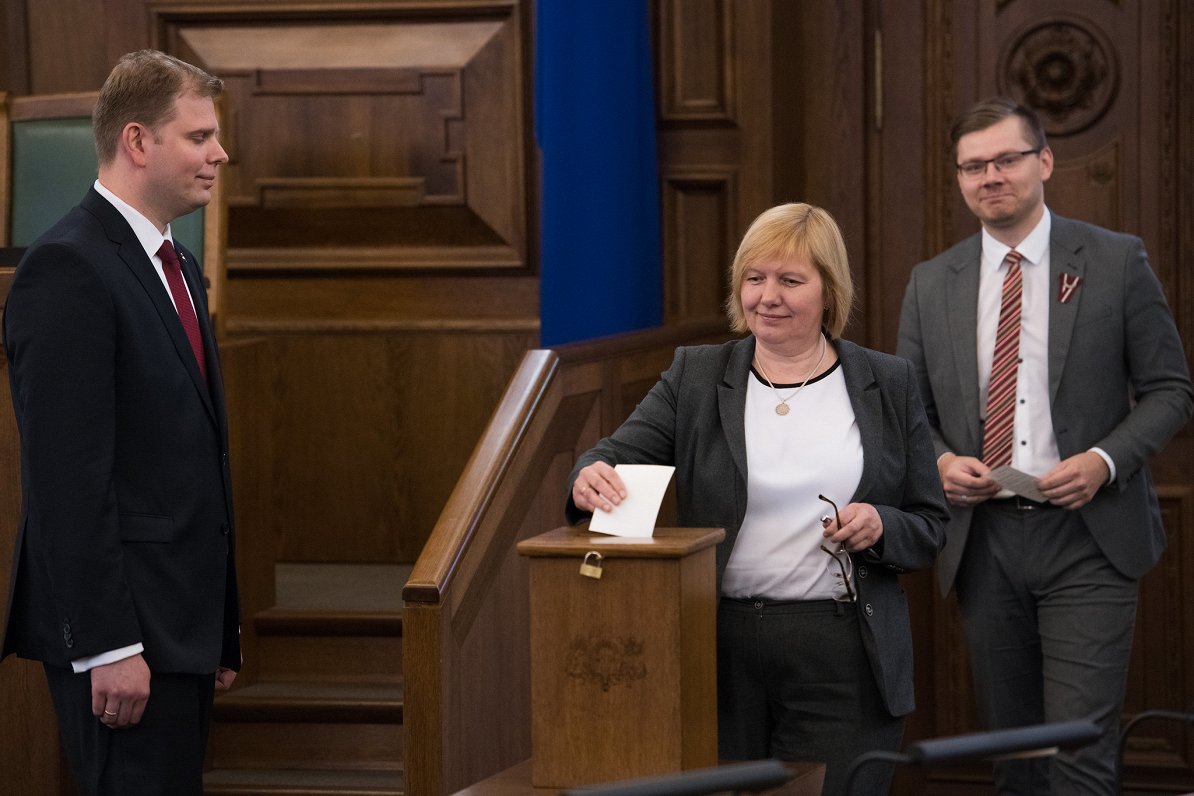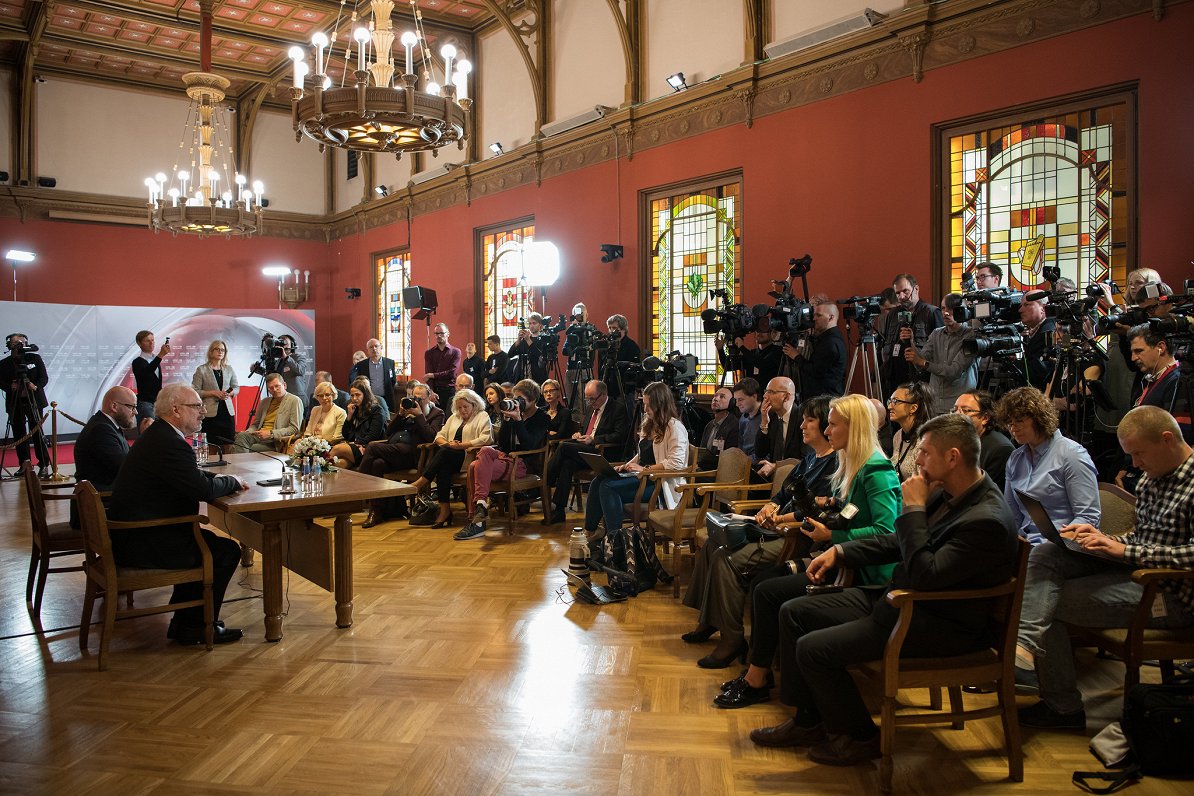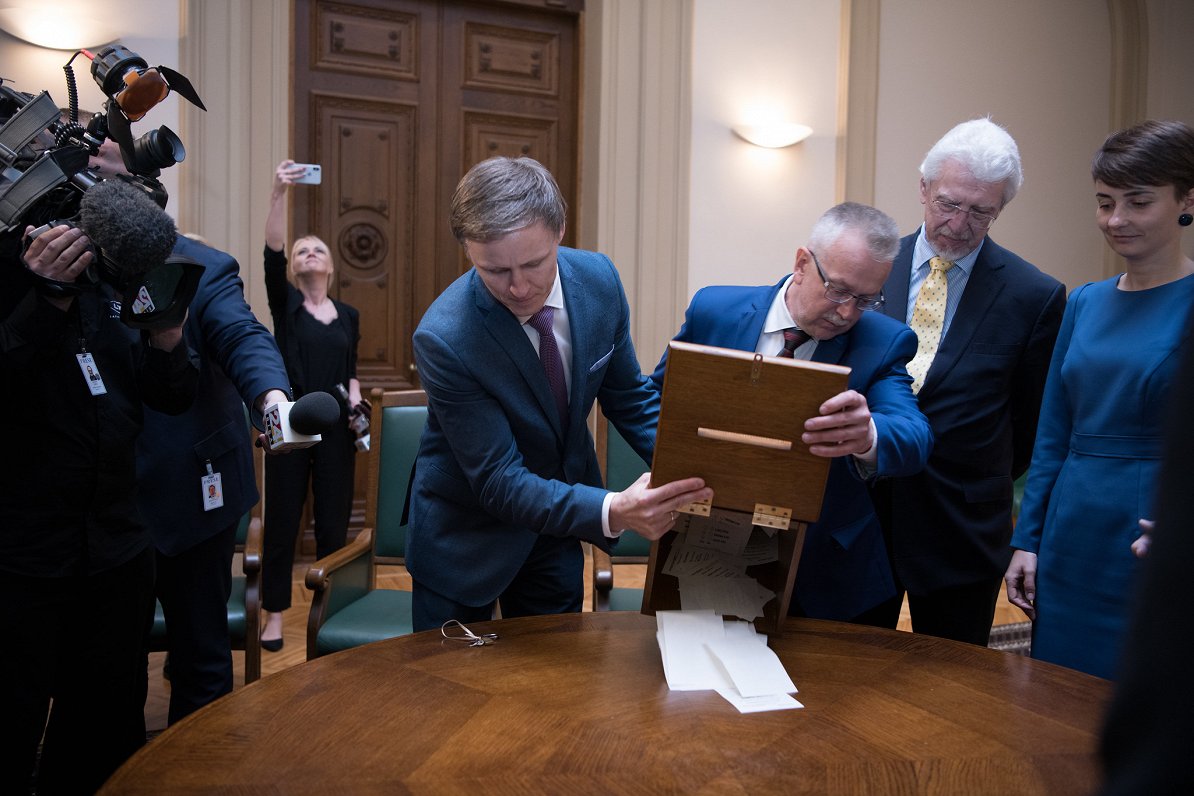Unlike many countries, Latvia's President is not chosen by a direct public vote, but by the votes of the 100 Saeima deputies (who are, of course, themselves elected by the public in parliamentary elections). There are currently seven political parties represented in Saeima, plus one independent MP.
The selection process is governed by Latvia's Constitution (Satversme) and the Rules of Procedure of the Saeima.
Eligibility
Not all Latvian citizens are eligible to become President. Candidiates must be at least 40 years of age and cannot be dual citizens of Latvia and another country so, for example, current Prime Minister Krišjānis Kariņš could not become President as he has dual Latvian-American citizenship. However, there is no requirement for the President to have been born on Latvian soil – former President Raimonds Vējonis was born near Pskov in Russia.
In addition, the office of President cannot be held concurrently with any other office. That includes being a member of the Saeima, so if a Saeima deputy is elected President, he or she must resign their mandate.
The president is head of state for a four-year term and acts as a symbolic and representative figure. He or she is also the nominal commander-in-chief of the armed forces. Presidents in Latvia can sign bills into laws, ratify treaties, issue pardons, and declare war (with a Saeima vote). They also nominate the head of the government, can call special parliamentary sessions, and have the right to dissolve the parliament and call an early election. The President appoints ambassadors, and receives foreign diplomats and heads of state.
The nomination
According to the Latvian Presidential Election Law, candidacies for the position of the President must be submitted in writing to the Presidium of the Saeima no earlier than 60 days and no later than 55 days before the end of the term of office of the current President. That means May 9 to 13 this year.
However, the weeks leading up to that will see the parties going through the process of evaluating their potential nominees. This involves a lot of discussion and horse-trading about the pros and cons of different people, much of it behind closed doors. Ostensibly, the aim is to find a candidate with an acceptable reputation and ideological platform who has a chance of securing at least 51 votes.
In reality though, candidates can emerge for a variety of reasons. For example, a small opposition party with no real chance of getting its candidate elected might opt for a 'symbolic' figure who can generate a burst of publicity for the party, or just make it as uncomfortable as possible for other candidates. Alternatively, parties might band together on a compromise candidate in an attempt to reach critical mass or stay in the fight for as long as possible. They might do likewise to undermine someone else's nominee who looks like they might be attracting support. The motivations and permutations are multifarious and provide a rich source of speculation among political scientists, journalists and members of the public.
One of the most attractive aspects of the Latvian system of selecting a President is its ability to surprise. There is no guarantee that the candidate everyone thought was a dead certainty ahead of the vote will even make it to the latter stages.
Usually candidates take part in several pre-vote debates in the public space, though there is no official requirement for them to do so. That often includes an English-language debate hosted by the Latvian-American Chamber of Commerce which is of particular interest to the Anglophone community and media.
The voting process
According to the Latvian Presidential Election Law, the Presidium of the Saeima calls for a parliamentary session no earlier than 40, but no later than 30 days before the end of the term of the incumbent president. This time around it is on May 31.
In the past, the actual election of the President was even more of a case of smoke-and-mirrors than the nomination process because it was a secret ballot – the only secret ballot used by the Saeima. This often led to discrepancies between who Saeima deputies said they had voted for and the numbers at the end of the vote – because there was no way of telling who had lied or who had defied party orders one way or another.
On the one hand, this meant in theory that deputies could not be placed under any political pressure or face reprisals from a new President who knew he or she was not supported by a certain person. On the other hand, it meant deputies did not have to answer for their actions to voters, and led to suspicions that votes could be 'bought' by promises of future influence, or used for the settling of old scores.

An important change came at the 2019 Presidential election, after a public petition put pressure on MPs to change the system. Now, the vote is no longer secret. Saeima deputies will have their votes revealed after the fact.
The voting process itself is fascinating and can be quite exciting. Saeima votes are usually held electronically but for the Presidential votes, a good old fashioned ballot box and paper ballots are used. Members go to the box one at a time and post their ballots in support of one of the nominees. The candidates watch nervously from the public viewing gallery.
If no candidate receives a simple majority – the magic 51 votes – then after a pause for some inter-party wheeling and dealing, members move to vote again in a second round, with the same nominees.
If there is still no winner, things get really interesting and enter an elimination phase. The candidate with fewest votes is eliminated and another vote takes place. This carries on for as long as is required – if necessary until just one nominee remains. But even then, victory is not assured. Deputies can abstain if they want, so a single candidate can fail to get the necessary 51 votes. If that happens, Saeima can reschedule the vote, and nominations are open again.

For example, in the 1999 election (with secret voting) after five rounds of voting the parliament appeared to be gridlocked and new nominations were called for. Among these was a new compromise candidate – a Latvian emigre from Canada named Vaira Vīķe-Freiberga. In the sixth round of voting she was elected with 53 votes and went on to become one of Latvia's most popular presidents ever.
Conversely, in the 2011 election, Andris Bērziņš’ emergence as the winner was a surprise to many even within his own party. He had such a low profile that, somewhat embarassingly, congratulations started to pour in to one of his party colleagues with the same name who had served as Prime Minister in 2000-2002.
After the vote
Once the name of the new President is confirmed by the parliamentary vote-counters, they are expected to make a brief speech in the main Saeima chamber. This is followed by a press conference in a nearby hall.
The handover period from the old to the new President is relatively brief, particularly when compared to places like the United States. There will be just over a month from the May 31 vote to the start of the new presidential term on July 8 when the inauguration events of President-Elect take place.

The President, on assuming office at the Saeima, takes the following solemn oath:
“I swear that all of my work will be dedicated to the welfare of the people of Latvia. I will do everything in my power to promote the prosperity of the Republic of Latvia and all who live here. I will hold sacred and will observe the Constitution of Latvia and the laws of the State. I will act justly towards all and will fulfil my duties conscientiously.”
An address by the President of Latvia at the Freedom Monument is a new tradition on the day of inauguration, and is followed by the outgoing President symbolically handing over the keys to Rīga Castle to the new President.
More information on the institution of the presidency and previous presidents is available at the official website of the State President, including biographies of all previous Presidents.
































